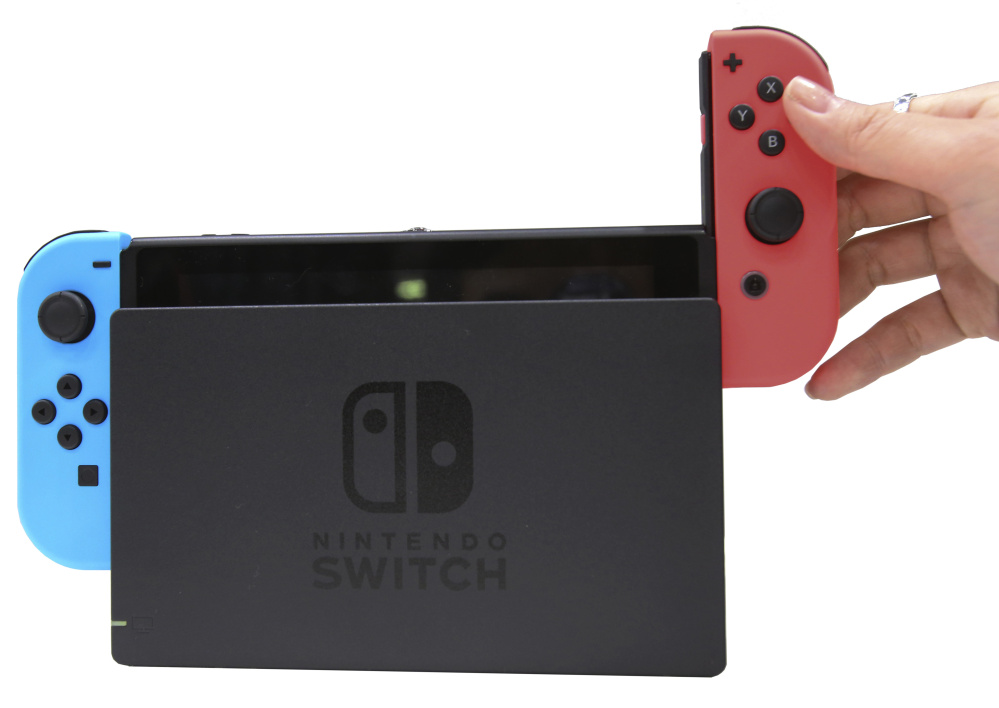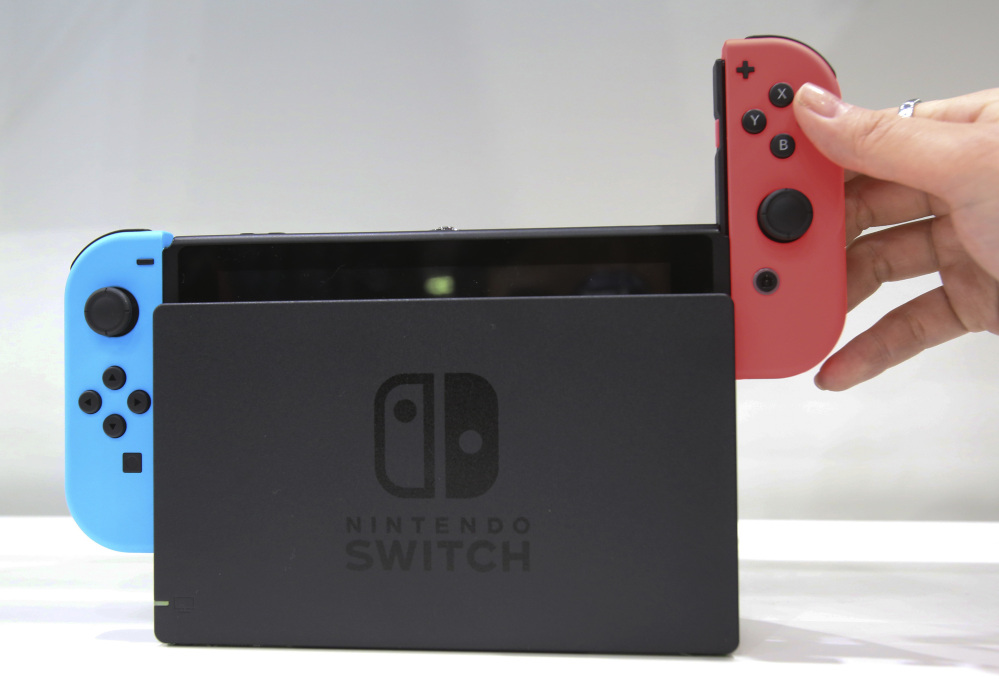SEATTLE — Nintendo is trying to erase the divide between video games played in the living room and on the go. And the highly anticipated launch of its Nintendo Switch system on Friday is the latest test of the legendary video-game company’s staying power.
Nintendo’s last big hit – the motion-sensing Wii – was released in 2006. Since then, a successor – the Wii U – was poorly received, and the rise of smartphone gaming has challenged Nintendo’s sales of handheld consoles.
Microsoft and Sony, the other main builders of living-room game consoles, have doubled down in an arms race to pack their new Xbox and PlayStation variants with the processing power to support detailed graphics and virtual-reality headsets.
Nintendo, as the Japanese company tends to do, has decided to go its own way.
The Switch functions much like an Xbox or PlayStation when plugged into its docking station, displaying games on a TV screen.
But remove the Switch’s tablet-sized core from the dock, and the same game goes mobile, displaying the action on a portable 6.2-inch touch screen.
Two versatile controllers, called Joy-Con, can be attached to the side of the Switch on the go or snapped together for use as a more traditional controller. Each Joy-Con also supports motion control input.
The whole bundle costs $300, not including games or extra storage cards.
Nintendo could use a hit, and it’s pulling out all the marketing stops. The company, which has its North American headquarters near Seattle, bought its first-ever Super Bowl ad to tout the device, showing people playing together at parties, and gaming on the go from the kitchen to the Laundromat.
The company’s last home console, the Wii U, debuted in 2012 and was the laggard of a generation that includes the Xbox One and PlayStation 4. Nintendo’s revenue has declined for seven consecutive years, falling by 73 percent in that time.
Reviewers who have gotten their hands on the new hardware have so far been impressed by the Switch’s design and the polish on launch title “The Legend of Zelda: Breath of the Wild.”
Many have also pointed out the technological shortcomings of the device, including 32 GB of storage that severely limits the amount of downloaded games people can store. That capacity is expandable, thanks to SD cards, Nintendo says.
With hardware more akin to a high-end tablet than a dedicated gaming machine, Nintendo has decided to abandon the race for ultrahigh-definition graphics, and some reviewers noticed Zelda stumbling a bit when trying to render images in TV mode.
And in a world of gaming hubs that also host internet-enabled video and music streaming, the Switch is gaming only. There’s no Netflix or Facebook, or at the outset, an internet browser.
Games coming this year from Nintendo’s own studios include “Super Mario Odyssey,” “Mario Kart 8 Deluxe” and “Splatoon 2.”
Big developers including Electronic Arts and Activision largely stopped making games for the Wii U.
“It will play games, but that’s about it,” said Lewis Ward, who tracks video-gaming companies for researcher IDC.
Ward said the success of the device may hinge on whether Nintendo can drum up enough interest with sales of its own games to spur independent developers to sign on and release their best games for the platform.
“They need to perform better than the Wii U,” Ward said. “It will really be about how well can Nintendo bring system-selling games to market. Can they do that every couple of months? That’s going to be really important to drive initial” sales, he said.
Send questions/comments to the editors.




Success. Please wait for the page to reload. If the page does not reload within 5 seconds, please refresh the page.
Enter your email and password to access comments.
Hi, to comment on stories you must . This profile is in addition to your subscription and website login.
Already have a commenting profile? .
Invalid username/password.
Please check your email to confirm and complete your registration.
Only subscribers are eligible to post comments. Please subscribe or login first for digital access. Here’s why.
Use the form below to reset your password. When you've submitted your account email, we will send an email with a reset code.